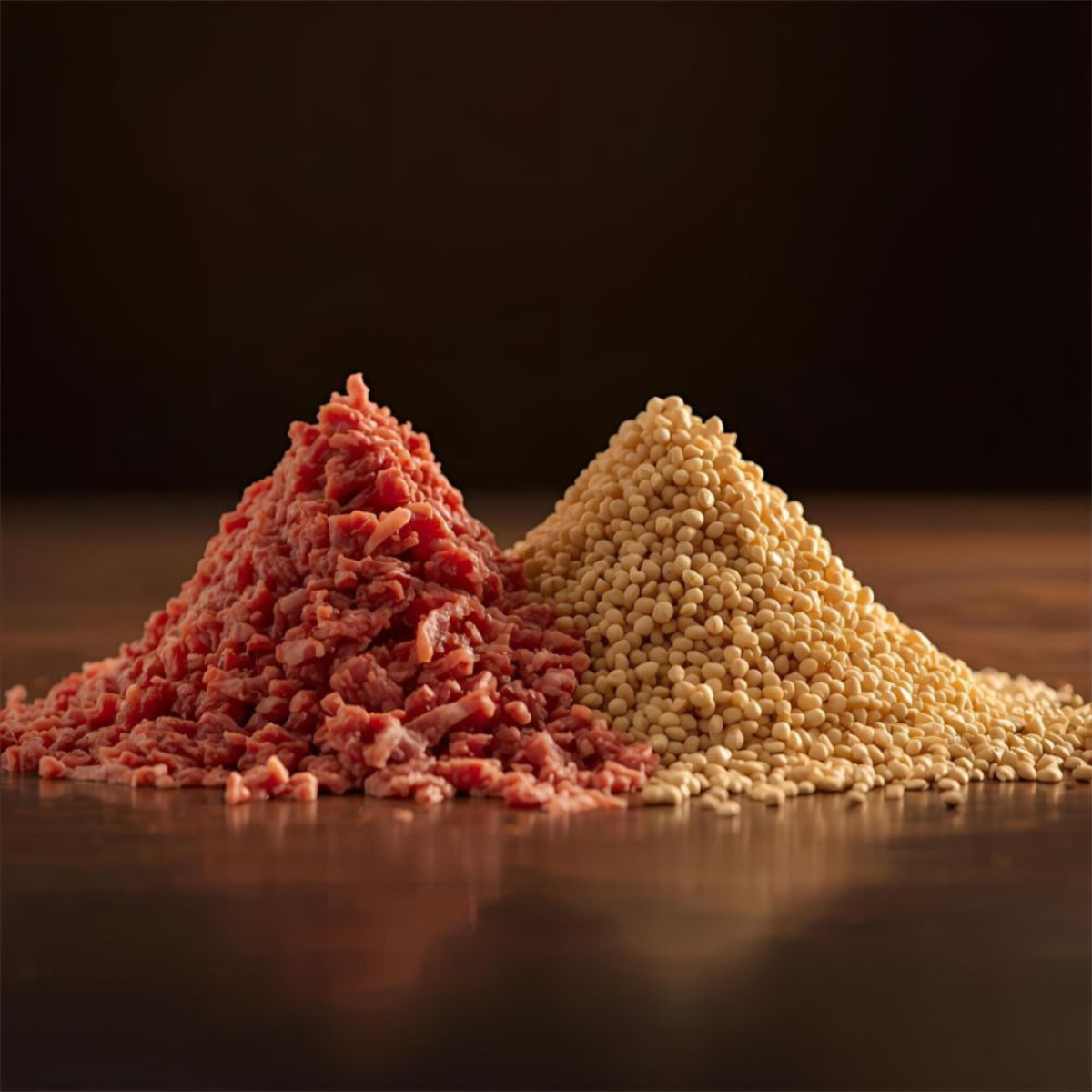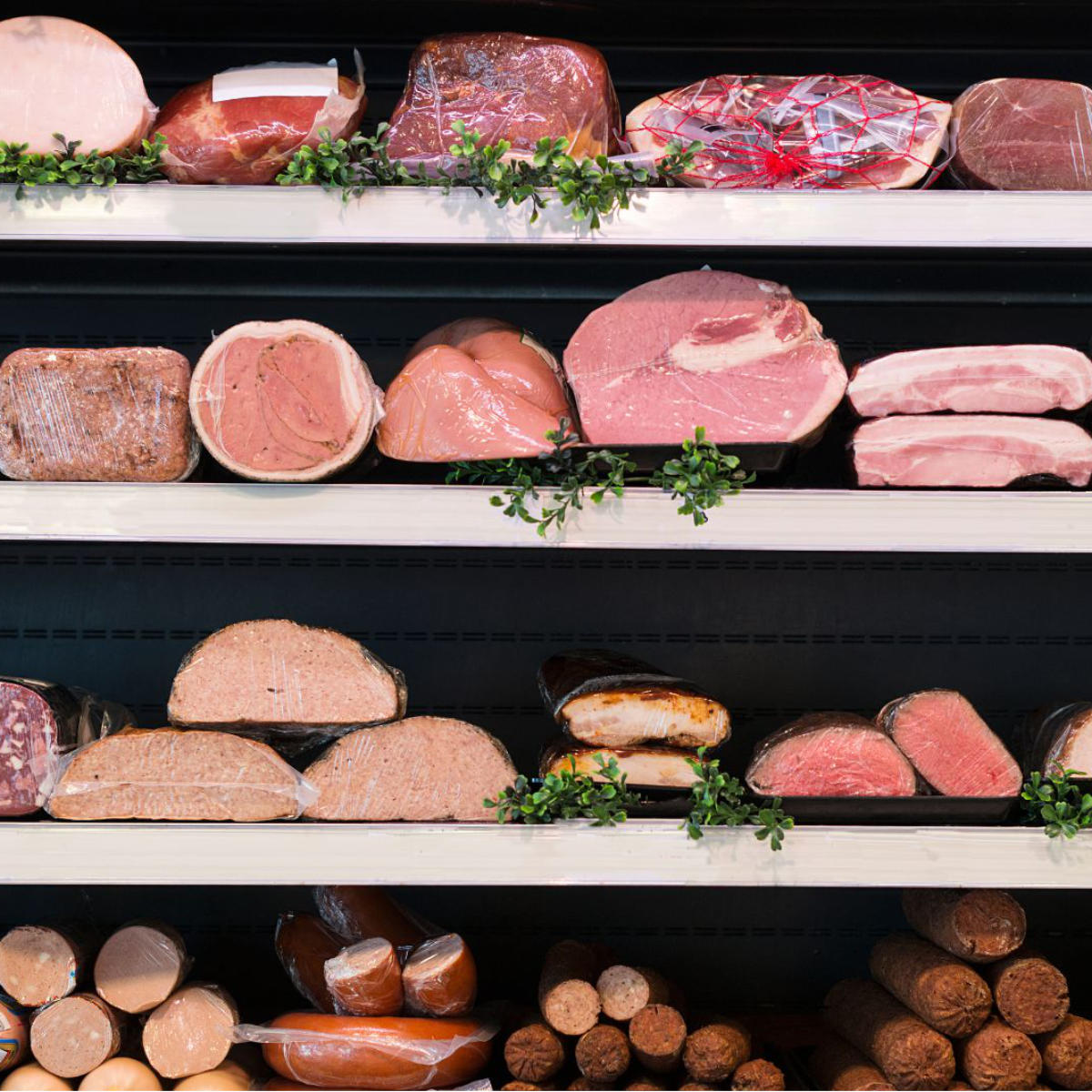Reading time: 4 minutes
Why do we need proteins? Animal, vegetable – it's all about the right mix
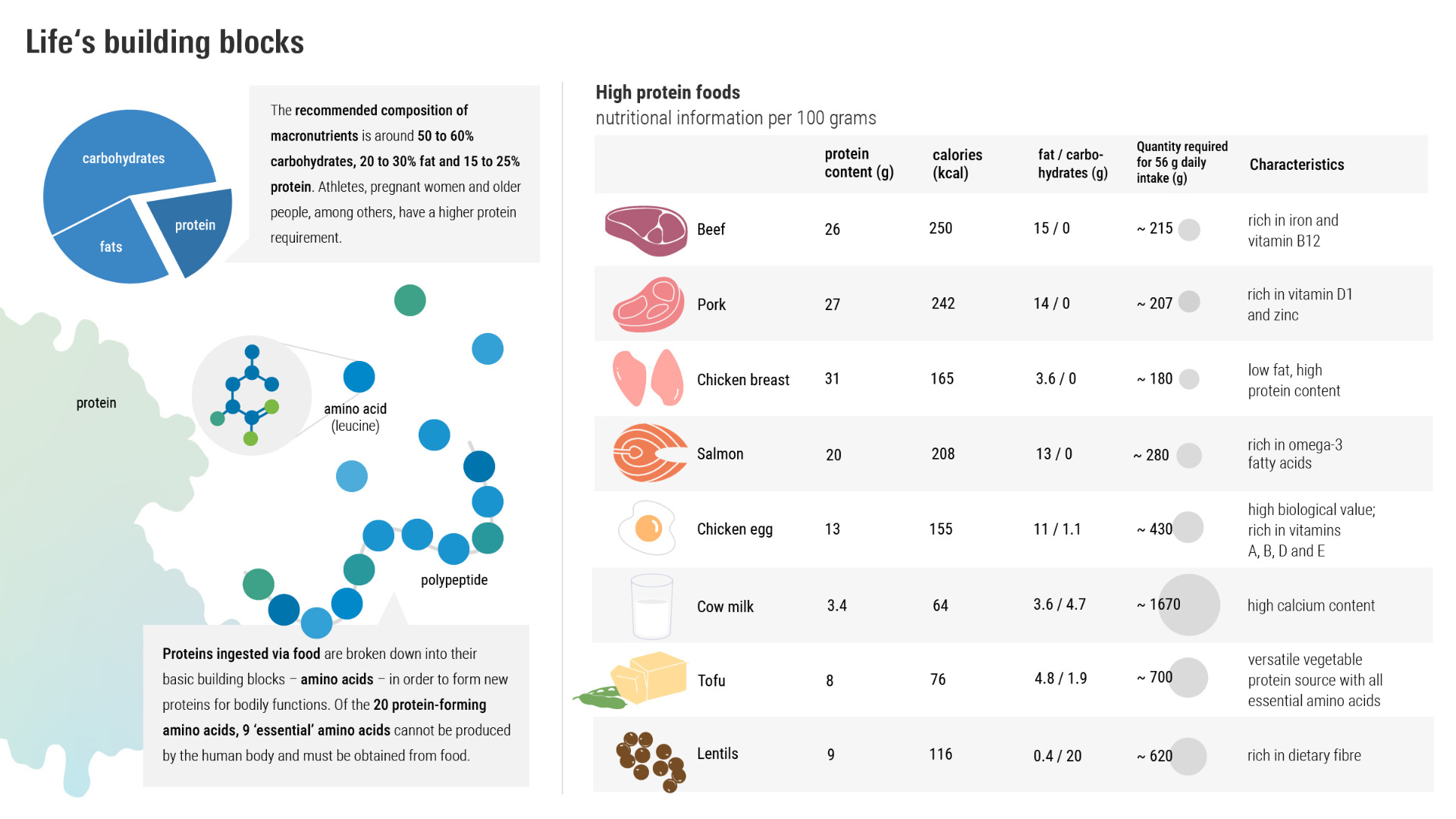
A protein is a macromolecule that consists of amino acids. Proteins, along with carbohydrates and fats, are among the three essential macronutrients. In the body, they support the formation of muscles, skin, hair and other tissues, their enzymes accelerate chemical reactions, and they regulate bodily processes via hormones. They form antibodies that fight pathogens and, together with haemoglobin, transport oxygen in the blood. Proteins are absorbed through food and broken down into amino acids in the body to form new proteins.
The benefits and tolerability of proteins for humans can be determined by criteria such as amino acid profile, biological value or digestibility. Those protein sources that provide all essential amino acids are referred to as ‘complete proteins’. Proteins of animal origin such as meat, fish, seafood, eggs and dairy products are usually complete proteins. However, some plant-based protein sources such as soya products, quinoa or chia seeds also contain all essential amino acids. Experts at the German Nutrition Society (DGE) recommend eating mainly plant-based foods: ‘These should be supplemented with animal products. For example, combining eggs with potatoes, fish with beans or cereals with milk increases the biological value.’
Where can we get our proteins from? An overview of meat, milk, fish and soya
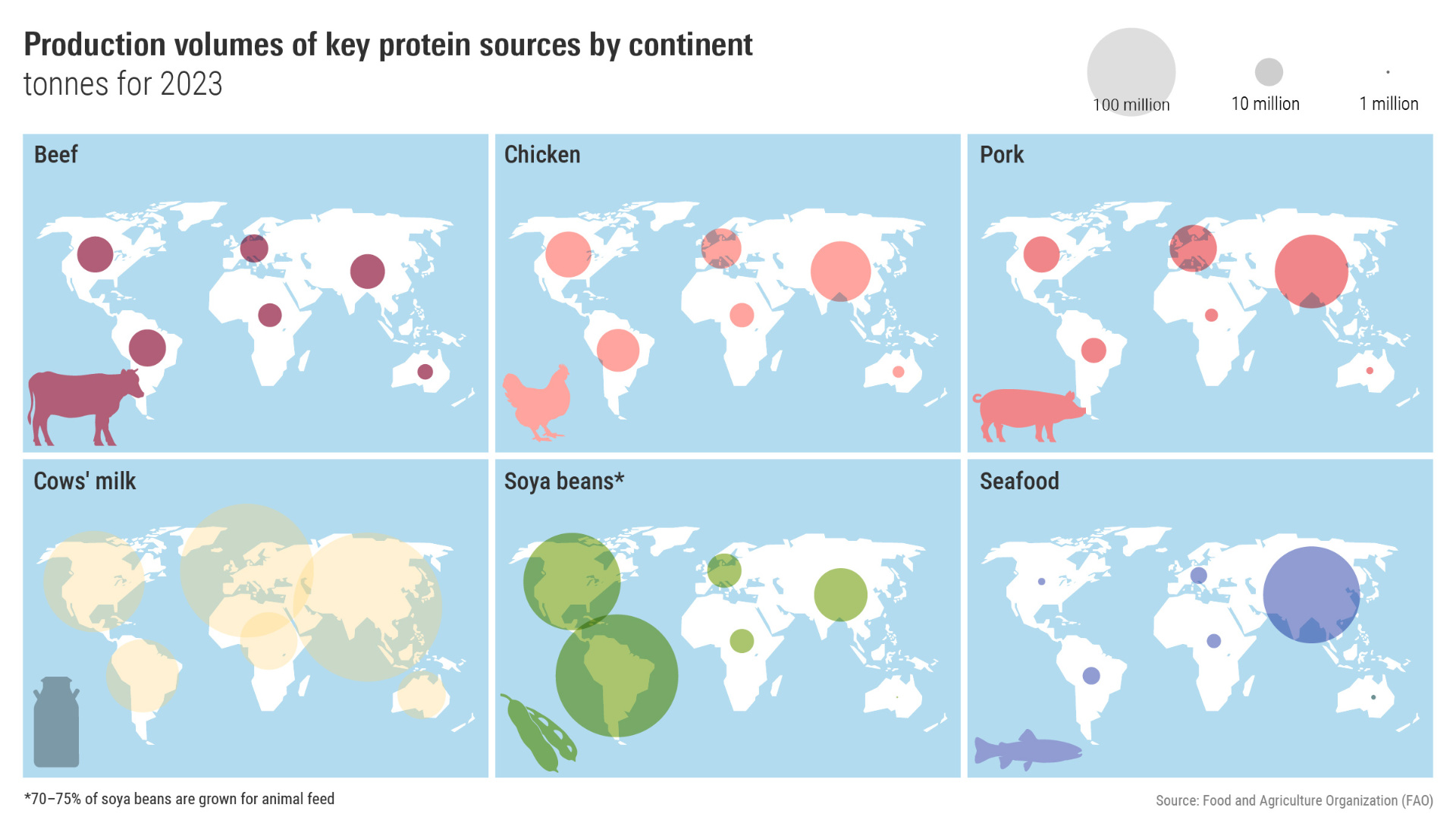
When it comes to global protein production, meat is the most important source of protein. In 2023, around 320 million tonnes of beef, pork and chicken were produced worldwide. While the Americas dominate the production of beef and chicken, with the United States followed by Brazil as the world's largest producer among countries, China is far ahead in the production of pork, with 58 million tonnes: the United States, in second place, produced ‘only’ 12 million tonnes in 2023.
Why is pork so popular in China? It has been an integral part of Chinese cuisine for centuries and is a traditional symbol of prosperity, since it used to be a luxury item. With rising prosperity in China and due to domestic production, stable and low prices and easy availability, a pork boom occurred.
Germany, where pork is also traditionally popular, ranked fifth among the top producers in 2023, with 4 million tonnes per year.
Fish and other seafood are particularly prominent in Southeast Asian cuisine, where many countries have coastlines or are island nations. Here, too, populous China is the largest producer, followed by Indonesia, the world's largest archipelagic state with over 17,000 islands. The vast majority of fish and other marine animals are no longer caught, but bred in aquaculture. While the volume of fish caught in fisheries has remained largely stable for decades, aquaculture has grown steadily. In 2022, aquaculture production (94 million tonnes) exceeded fisheries production (about 90 million tonnes) for the first time, accounting for 51 % of global production of aquatic animals. Its share of direct human nutrition was even higher, at 57 %.
Soybeans are the most important source of vegetable protein, alongside wheat. The main producer is Brazil, with 152 million tonnes in 2023, followed by the United States and Argentina. Soy is much more likely to be an export product than other sources of protein in the form of soybean meal due to its good shelf life and transportability. Soy is more likely to end up in the animal feed than on the plate, as it is mainly used as a high-protein animal feed. In Asia, however, it has long played a central role as a direct source of protein for human consumption in the form of tofu. In recent decades, soy-based meat substitutes have also become increasingly important.
And what about cow's milk? In terms of quantity, cow's milk is actually the world's largest source of protein, with Europe and Asia being the most important production regions. Although milk as a liquid has a significantly lower protein content per kilogram than other sources, its widespread use underlines its central role in world nutrition.
The world's largest milk producer is India, which is the most important milk producer in Asia. An estimated 127 million tonnes of the 780 tonnes of cow's milk produced worldwide in 2023 came from India. This is due to the large number of cows in the country, which are culturally highly valued, as well as to government support such as the ‘White Revolution’ launched in 1970, the world's largest dairy development programme. Although the majority of the Indian population is lactose intolerant, as is common in Asia in general, many dairy products consumed in India, such as yoghurt, buttermilk and ghee, are fermented or otherwise processed to reduce their lactose content. Dairy production is now an important industry in India, providing a source of income for millions of people and contributing to food security, especially in poorer regions where other sources of protein are less available or more expensive.
Are we heading for a ‘protein gap’?
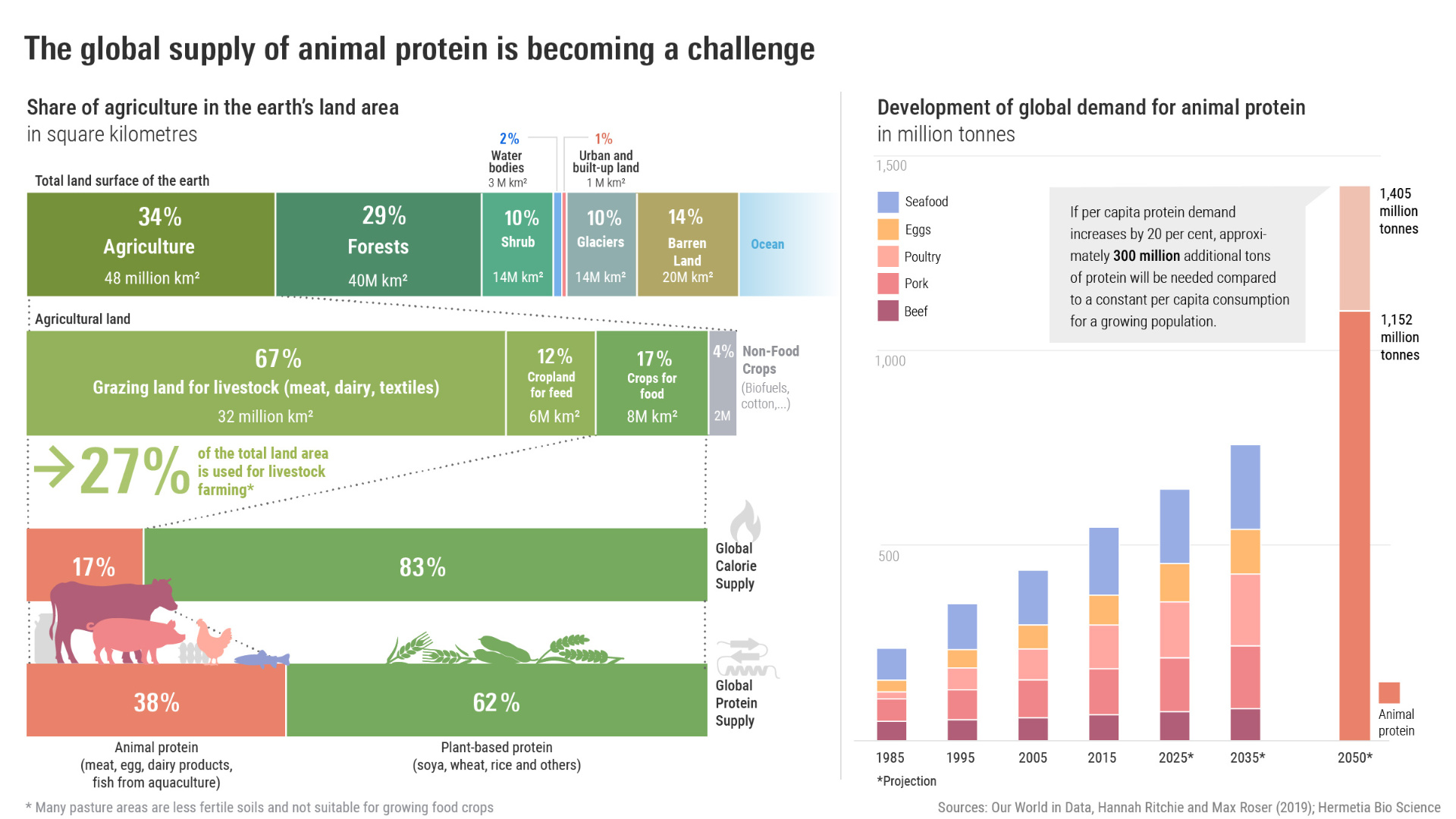
The ‘protein gap’ refers to the gap between current global protein production and future protein demand, which is increasing due to population growth and changing dietary habits. In many emerging markets, such as China, India, Brazil, Indonesia and Vietnam, average incomes are rising, often leading to greater demand for animal proteins. The gap arises because conventional methods of protein production, such as monoculture agriculture or conventional animal husbandry, are not effective enough to meet the growing demand without placing a significant burden on the environment. This is because conventional animal husbandry is resource-intensive: according to FAO (Food and Agriculture Organisation) estimates, 27 % of the Earth's total land area is used for livestock farming, and around 70 % of the world's fresh water is used for agriculture as a whole. If demand for animal protein doubles by 2050, there will not be enough resources. In addition, livestock farming contributes significantly to greenhouse gas emissions, accounting for 14.5 % of them. To close the protein gap, a holistic approach to cultivation, production and nutrition is needed that includes both plant and animal protein sources. Alternative proteins can play an important role, especially when combined with measures such as improving agricultural productivity, promoting sustainable farming methods and educating people about balanced nutrition. At the same time, traditional animal proteins should continue to be part of the solution to meet global protein needs.


